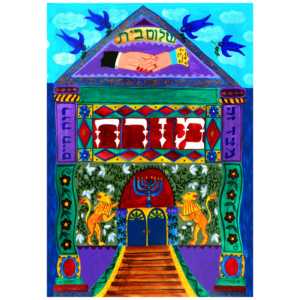 “And when a person will sanctify their house to be holy…” (Leviticus 27:14)
“And when a person will sanctify their house to be holy…” (Leviticus 27:14)
Who is the holy person? The one who’s house is holy. (R’ Menachem Mendel of Kotzk)
THINKING ABOUT THE TEACHING:
Part of the lesson here might be that there are many people who can act holy in a house of worship or out in public. But the true mark of their holiness is if their home is holy – what takes place behind closed doors out of the public glare. What kind of atmosphere is projected by the home. Is it one of peace and tranquility, one of respect for each other, a home that is open to guests and people who are needy, a home where God is honored and His Torah is studied…this kind of home could only have been set up by holy people.
There is a puzzling verse in the book of Psalms: “One thing I ask of the Hashem, this is what I seek. TO dwell in the house of Hashem all the days of my life; to behold the pleasantness of Hashem and to visit in His palace.” (27:4)
The obvious question is, if the Psalmist is always dwelling in the house of Hashem, there’s no need to visit it – he’s already there.
Rabbi S.R. Hirsch suggested that the beginning of speaking about the Psalmist turning his own home into a house for God and dwelling there for his entire life. God would be totally welcome there, and he could bask in the pleasantness of His presence all the time. In addition, he would visit God’s sanctuary, the Holy Temple, as well.
What is necessary to transform our homes into a spiritual sanctuary for God? The Hebrew word for house is BAYIT, and the numerical value of its letters is 412. The Hebrew word for Holy Temple is MIKDASH. The numerical value of the letters in this word is 444. The difference between them is 32, which is the equivalent of the Hebrew word LEV – heart. The elevation of our home to being a Godly place depends upon our hearts, our will, our desire. If we truly want God to dwell with us, He will. As the Kotzker Rebbe famously said – G0d is where we let Him in.




